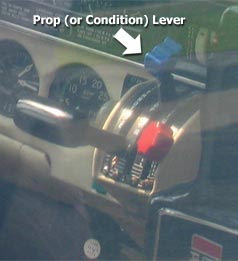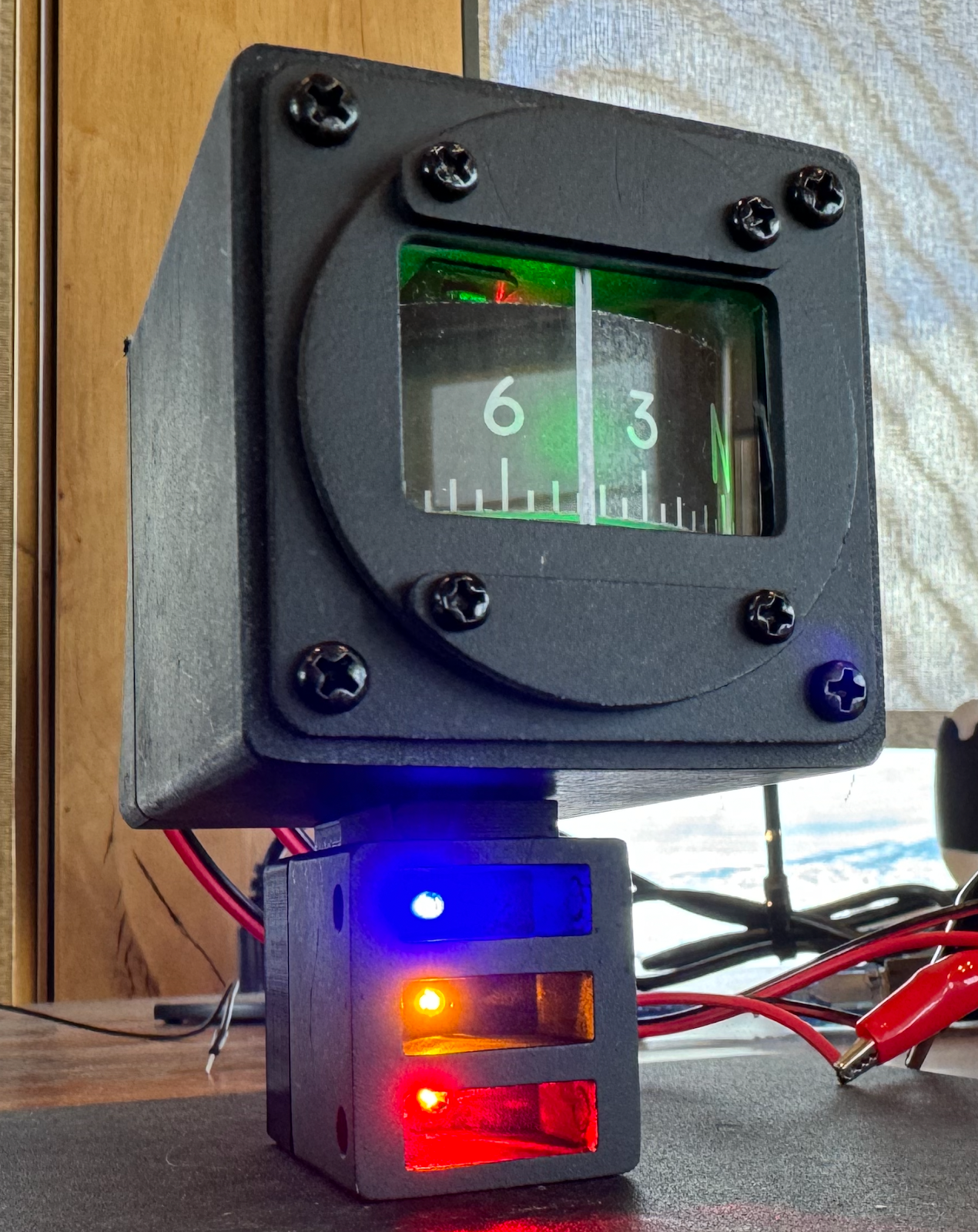Starting a new endorsement
Today I sat in the left seat of a complex aircraft for the first time, adding 0.9 hours in my logbook.
I decided to go for a "complex" endorsement, which will allow me to fly airplanes that have:
The flaps are nothing new to me, so that is non-issue for this endorsement. The only interesting thing about that one is that the Arrow has a hand lever to operate the flaps, instead of an electrical switch like the C-172. I haven't decided which I like better yet. There is something nice about using your own hand power to make a change to the airplane's flight controls though (instead of a motor). I have always preferred manual trim wheels/cranks over electric trim, but with trim you need to make much finer adjustments than you do with the flaps.
So, even though the flaps are no big deal, the other two systems do pose new challenges.
 The adjustable prop means that there is a new lever in the airplane to set the pitch of the blades (the blue topped lever picture here).
The adjustable prop means that there is a new lever in the airplane to set the pitch of the blades (the blue topped lever picture here).
The benefit of it is similar to what you get by shifting gears in a car - you can change how much "bite" the propeller makes in the air, therefore you can get the most (or more) out of your engine power. So to change power settings you often have to adjust two levers instead of one (the throttle and the prop). This also means that instead of throttle controlling propeller RPM, like I am used to, it controls "Manifold Pressure" and the prop lever controls RPM.
Fixed prop airplanes have to have a prop made for climb performance or cruise performance, but not both.
The retractable gear is an important change. Namely, you don't want to land with your wheels up. So you have the issue of knowing when to properly raise and lower the gear as well as how to get the gear down in an emergency situation (if the normal gear extension mechanism is on the fritz, for instance).
Today my instructor and I started by going over some of the new systems.
He discussed what the term "squared" refers to, which means matching the manifold pressure and RPM numbers. So if you are at 24 inches of mercury in manifold pressure, squaring up the numbers would mean setting 2400 RPM with the prop lever. One big thing here is to not let the manifold pressure number get higher than the RPM number - to avoid putting a hurt on the engine.
Now, on to what it was like to fly the plane for the first time.
Getting into and out of the pilot's seat is quite a chore, especially with my backpack of goodies in tow. There is only one door, on the right side of the plane, so the pilot has to drop down in and scoot over to the left seat. At least I might get more flexible if I do that enough.
The Arrow requires a little more control force in pitch vs. the 172, but felt really light and responsive in roll. The 200 HP engine felt nice and smooth, though it didn't feel too much stronger than the 172R I normally fly (which is rated at 160 HP). The airplane has a direct linkage between the rudder pedals and the nose gear steering, so it helps to get the airplane rolling a little before you try to turn too hard. I didn't get a good idea of the sight picture out over the nose today because the horizon was obscured behind haze, but I was definitely sitting up higher than I typically do and felt like I had good outside visibility. There is no back window, but thankfully you don't do much backing up in an airplane.
The fact that it is a low wing airplane, and I have only flown high wing planes for the last year, turned out to not make a difference to me. I do have some time in a Piper 140 from years ago, maybe that is why.
I was a bit behind the airplane from time to time, it was weird to have to actually THINK about how to make power changes. But, with some careful coaching from my instructor, I was able to land it just fine (though my flare left something to be desired).
I really enjoyed the flight, and plan to fly it again in a week or so. My only big concern with getting this endorsement is that I don't have great checklist habits currently. That is something that HAS to be cured to fly complex aircraft.
Some other new things to manage in this plane vs. the 172:

I decided to go for a "complex" endorsement, which will allow me to fly airplanes that have:
- Flaps (OK, no big deal)
- Constant speed propeller (the blades can change pitch)
- Retractable gear (now we're talkin!)
The flaps are nothing new to me, so that is non-issue for this endorsement. The only interesting thing about that one is that the Arrow has a hand lever to operate the flaps, instead of an electrical switch like the C-172. I haven't decided which I like better yet. There is something nice about using your own hand power to make a change to the airplane's flight controls though (instead of a motor). I have always preferred manual trim wheels/cranks over electric trim, but with trim you need to make much finer adjustments than you do with the flaps.
So, even though the flaps are no big deal, the other two systems do pose new challenges.
 The adjustable prop means that there is a new lever in the airplane to set the pitch of the blades (the blue topped lever picture here).
The adjustable prop means that there is a new lever in the airplane to set the pitch of the blades (the blue topped lever picture here).The benefit of it is similar to what you get by shifting gears in a car - you can change how much "bite" the propeller makes in the air, therefore you can get the most (or more) out of your engine power. So to change power settings you often have to adjust two levers instead of one (the throttle and the prop). This also means that instead of throttle controlling propeller RPM, like I am used to, it controls "Manifold Pressure" and the prop lever controls RPM.
Fixed prop airplanes have to have a prop made for climb performance or cruise performance, but not both.
The retractable gear is an important change. Namely, you don't want to land with your wheels up. So you have the issue of knowing when to properly raise and lower the gear as well as how to get the gear down in an emergency situation (if the normal gear extension mechanism is on the fritz, for instance).
Today my instructor and I started by going over some of the new systems.
He discussed what the term "squared" refers to, which means matching the manifold pressure and RPM numbers. So if you are at 24 inches of mercury in manifold pressure, squaring up the numbers would mean setting 2400 RPM with the prop lever. One big thing here is to not let the manifold pressure number get higher than the RPM number - to avoid putting a hurt on the engine.
Now, on to what it was like to fly the plane for the first time.
Getting into and out of the pilot's seat is quite a chore, especially with my backpack of goodies in tow. There is only one door, on the right side of the plane, so the pilot has to drop down in and scoot over to the left seat. At least I might get more flexible if I do that enough.
The Arrow requires a little more control force in pitch vs. the 172, but felt really light and responsive in roll. The 200 HP engine felt nice and smooth, though it didn't feel too much stronger than the 172R I normally fly (which is rated at 160 HP). The airplane has a direct linkage between the rudder pedals and the nose gear steering, so it helps to get the airplane rolling a little before you try to turn too hard. I didn't get a good idea of the sight picture out over the nose today because the horizon was obscured behind haze, but I was definitely sitting up higher than I typically do and felt like I had good outside visibility. There is no back window, but thankfully you don't do much backing up in an airplane.
The fact that it is a low wing airplane, and I have only flown high wing planes for the last year, turned out to not make a difference to me. I do have some time in a Piper 140 from years ago, maybe that is why.
I was a bit behind the airplane from time to time, it was weird to have to actually THINK about how to make power changes. But, with some careful coaching from my instructor, I was able to land it just fine (though my flare left something to be desired).
I really enjoyed the flight, and plan to fly it again in a week or so. My only big concern with getting this endorsement is that I don't have great checklist habits currently. That is something that HAS to be cured to fly complex aircraft.
Some other new things to manage in this plane vs. the 172:
- Fuel selection - being a low wing aircraft, you can't feed fuel from both tanks, so you need to periodically change tanks and make sure you use the fullest tank for takeoff and landing
- Fuel pump - it is used in the Arrow more often than it is for the 172



Comments